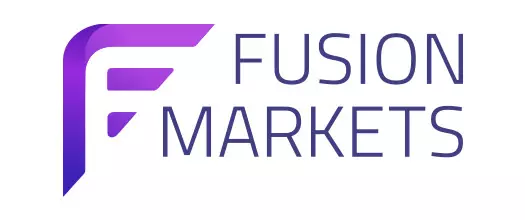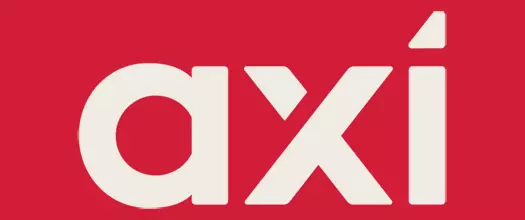Our team of expert traders tested numerous regulated and trustworthy brokers for silver trading and compiled a toplist of the best among them. Each silver broker received a quality score based on several factors, including Trustpilot rating, regulation, fees and commissions, available trading platforms, customer service and more.
 Fusion Markets74-89% of retail's CFD accounts lose money
Fusion Markets74-89% of retail's CFD accounts lose money FP Markets73.85% of retail investor accounts lose money
FP Markets73.85% of retail investor accounts lose money Global Prime74-89% of retail CFD accounts lose money
Global Prime74-89% of retail CFD accounts lose money Pepperstone75.5% of retail investor accounts lose money
Pepperstone75.5% of retail investor accounts lose money AxiThe vast majority of retail client accounts lose money
AxiThe vast majority of retail client accounts lose money XM Group72.82% of retail investor accounts lose money
XM Group72.82% of retail investor accounts lose money
Silver Trading Brokers
Once traders have learned how to take a position on silver, they can start searching for reliable brokers satisfying their requirements. There are a number of things you should pay attention to before you start trading silver with a given broker, including the trading conditions and costs, regulation and security, market variety, funding options, account types, and mobile applications, to name a few.
- 1. AvaTradeMin Deposit$/€/£100Fees
- No fees for account opening
- No deposit and withdrawal fees
- A $50 inactivity fee
CommissionsNo commissionsSpread$0.029 over-marketLeverage EU1:10Leverage non-EU1:50CFDs are complex instruments and come with a high risk of losing money rapidly due to leverage. 71% of retail investor accounts lose money when trading CFDs with this provider. You should consider whether you understand how CFDs work and whether you can afford to take the high risk of losing your money.AvaTrade is among the most popular brokers for silver and precious metal trading. It has been an industry leader since 2006 and is now considered one of the safest online destinations for silver trading as it has seals of approval from several notable financial regulators, including ASIC, JFSA, CySEC, and FSCA.
The broker shines when it comes to integrity and fairness, providing transparent pricing, negative balance protection, and a wealth of educational resources to customers. AvaTrade’s user-oriented approach and the desire to create an environment that works for traders at all levels has attracted more than 400,000 registered customers worldwide. Around 19 commodities are tradable through CFDs, with spreads for silver starting from $0.029 over-market. The maximum leverage for this precious metal is capped at 1:2 or 1:50, depending on the country.
The broker provides a varied choice of proprietary and third-party platforms, starting with the widely used MetaTrader 4, MetaTrader 5, and DupliTrade. Mobile traders can opt for AvaTradeGO, which became the best Forex trading app in 2022. AvaOptions, on the other hand, boasts a fully customizable interface and a range of risk management tools but is better suited to the needs of options traders.
The cutting-edge technology AvaTrade uses is not the only feature that makes the broker stand out from the crowd. Тraders can improve their skills with tons of valuable information they will find under the Education section. Clients of the broker can count on receiving timely responses to their queries as customer support representatives are available via email, live chat, and phone.
- 2. IQ OptionMin Deposit$/€10Fees
- Inactivity fee of $/€10 or the currency equivalent
- No deposit and withdrawal fees
CommissionsNo commissions for silver CFDsSpread0.039%Leverage EU1:10 (1:25 for professional traders)Leverage non-EU1:1000CFDs are complex instruments and come with a high risk of losing money rapidly due to leverage. 83% of retail investor accounts lose money when trading CFDs with this provider. You should consider whether you understand how CFDs work and whether you can afford to take the high risk of losing your money.IQ Option has been on traders’ radar since 2014 and has attracted over 140 million registered users since. The multi-licensed broker operates globally, offering competitive pricing for forex, cryptocurrencies, stocks, indices, ETFs, and commodities. The company has won multiple industry awards over the years, including Best Mobile Trading App in 2023.
Traders can rest assured IQ Option is a reliable and trustworthy silver trading broker as the company operates with licenses from CySEC, FCA, CONSOB, CNB, AFM, FSA (Estonia), and CNMV. Clients can speculate on the prices of hard and soft commodities like silver, gold, copper, crude oil, natural gas, corn, and wheat. Spreads for silver are relatively competitive, starting from 0.039% over-market.
European silver traders will benefit from maximum leverage ratios of 1:10 or 1:25, depending on whether they are eligible for retail or professional accounts. Clients from other countries have access to significantly higher leverage ratios of up to 1:1000 for silver CFDs. The broker caters to customers with a sleek and easy-to-use proprietary platform compatible with most desktop and mobile devices. Practicing with a refillable demo account with $/€10,000 in virtual balance is an option for less experienced traders.
Minimum deposits generally start from $10 and incur no additional fees. IQ Option caters to clients with live accounts with various secure payment options, including Visa, Mastercard, Neteller, Skrill, PayPal, and bank transfers. EU customers are eligible for investor compensation and negative balance protection.
- 3. AxiMin Deposit$5 (varies based on country)FeesNo deposit and withdrawal feesCommissions
- None for Standard accounts
- $7 for Pro accounts
- $3,50 for Elite accounts
Spread2.5 pips for XAG/USDLeverage EU1:10Leverage non-EU1:500Spread betting and trading both carry a high level of risk to your capital with the possibility of losing more than your initial investment. These products may not be suitable for all investors, and are not available to individuals under the age of 18. Please ensure that you are fully aware of the risks involved and refer to our Risk Warning. If necessary, seek independent financial advice. The Customer Agreement and Execution Policy available at www.axi.com/uk are important and should be reviewed prior to deciding whether to acquire, hold or dispose of Axi’s products.Launched in 2007, Axi is now trusted by more than 60,000 customers from around the globe. The company was established in Australia, but gradually became a global business as it subsequently opened offices in London and Dubai and expanded its operations to Germany, Latin America, and the Middle East.
The broker is known for its fast order execution, tight spreads, award-winning customer support, and advanced trading tools. As for the available markets, Axi clients can trade over 220 CFDs for gold, silver, forex, commodities, shares, cryptocurrencies, and indices, among others.
Axi presents clients with a unique trading experience as it offers the well-known MT4 platform and combines it with several exclusive tools. They can monitor and modify their trades, get real-time pricing, and access all major markets with ease on mobile and desktop devices.
Considering that Axi is trusted by traders from over 100 countries, it makes sense that there is a huge variety of accepted currencies and payment methods to meet their requirements. In addition to country-specific funding methods, traders can top up their accounts through credit or debit cards, Neteller, Skrill, POLi, Sofort, Giropay, iDEAL, and bank transfers, among others.
Axi clients get to enjoy a transparent trading environment as the broker is regulated by the Dubai Financial Services Authority (DFSA), Financial Conduct Authority (FCA), Cyprus Securities and Exchange Commission (CySEC), and the Australian Securities & Investments Commission (ASIC).
- 4. NSBrokerMin Deposit$500FeesFree deposits; a 2.9% fee for Neteller and Skrill withdrawalsCommissions$8 per standard lotSpreadFloating from $0.02Leverage EU1:10Leverage non-EU1:10Trading in Forex and Contracts for Difference (CFDs), which are leveraged products, is highly speculative and involves substantial risk of loss. It is possible to lose all your capital. Your capital is not guaranteed and may go down as well as up. Therefore, Forex and CFDs may not be suitable for all investors. Only invest with money you can afford to lose. So please ensure that you fully understand the risks involved. Seek independent advice if necessary.
NSBroker is yet another reliable silver trading broker, authorized and tightly regulated by the Malta Financial Services Authority (MFSA). The broker started operating a decade ago and has established itself as a trusted online trading destination that offers more than 100 financial instruments, high liquidity, and fast order execution.
Precious metals are not the only asset the broker offers as clients can also gain exposure to other assets like cryptocurrencies, energies, agricultural products, indices, and stocks. Customers can place orders via the instantly recognizable MetaTrader 5 platform available for desktop installation, mobile devices, and a broad range of browsers. NSBroker provides traders with access to various analytical and advanced trading tools no matter the time or the place, including economic insights and market sentiments.
NSBroker implements the ECN pricing model, ensuring the best possible trading conditions for all customers. Clients trading on margin will benefit from negative balance protection, preventing them from losing more than their available balance. NSBroker provides outstanding customer care via telephone, live chat, and email. The broker draws liquidity from notable financial institutions like Barclays, Credit Suisse, UBS, and Dukascopy.
- 5. Markets.comMin Deposit$100Fees
- Inactivity fee of $10 per month
- No deposit and withdrawal fees
CommissionsNone for silver CFDsSpread0.030 per unitLeverage EU1:10Leverage non-EU1:150CFDs are complex instruments and come with a high risk of losing money rapidly due to leverage. 68% of retail investor accounts lose money when trading CFDs with this provider. You should consider whether you understand how CFDs work and whether you can afford to take the high risk of losing your money.Created in 2008, Markets.com offers a seamless trading experience under the regulatory gaze of notable financial watchdogs like the FCA, ASIC, CySEC, and FSCA. The broker’s global reach extends to 4.7 million customers from more than 170 countries. Members of the Markets.com community enjoy speedy order execution, low spreads, and commission-free commodity trading. Markets.com is fully transparent when it comes to pricing and fees, ensuring all traders are well-aware of the cost of a trade prior to opening a position.
The multi-asset platform gives traders the opportunity to speculate on the price movements of over 450 financial instruments, including 23 cryptocurrencies, 260+ stocks, 60+ EFTs, 29 indices, and 19 commodities like silver, gold, platinum, and sugar. Silver traders at Markets.com can take advantage of various powerful tools for fundamental and technical analysis. Markets.com provides customers with several intuitive trading platforms, including MT5, MT4, and TradingView. Less experienced clients can additionally engage in social trading.
Payments to and from Markets.com are swift and cost-efficient as the broker supports robust banking methods like Neteller, PayPal, Skrill, Visa, Mastercard, and fast bank transfers. Onboarding customers must transfer at least $100 to their live balance to get started. Silver traders with a limited budget can increase their market exposure by leveraging their positions at maximum rates of 1:10 or 1:150, depending on their country of residence.
- 6. City IndexMin Deposit$150 ($2,500 recommended minimum for commodity trading)Fees2% fee for credit/debit card transactions in some countries; a $15 monthly inactivity feeCommissionsNone for silver CFDsSpreadFrom 0.0 pointsLeverage EU1:10Leverage non-EUDepends on position sizeCFDs are complex instruments and come with a high risk of losing money rapidly due to leverage. 69% of retail investor accounts lose money when trading CFDs with this provider. You should consider whether you understand how CFDs work and whether you can afford to take the high risk of losing your money.
Established in 1983 in the UK, City Index is committed to providing best-in-class spread betting, forex, and CFD trading services to customers from the UK, Australia, and Asia. The broker has a solid international presence and operates as part of the StoneX Group, which carries licenses from the FCA, ASIC, and MAS.
City Index clients can access over 13,500 tradable markets across major asset classes like stocks, currencies, indices, and futures. Commodity traders can profit from the rising or falling prices of 20+ commodities, including silver, gold, crude oil, cotton, coffee, and sugar. Spread betting is also available to customers from select jurisdictions. Bonds, thematic indices, interest rates, and options are also on the list of markets traders can pick from. The broker offers competitive spreads, coupled with fast and reliable execution, no matter what markets one is trading.
Traders can easily find an account that suits them as City Index provides a choice from standard, corporate, professional, and demo accounts. As for the available platforms, traders can place orders via TradingView, MT4, and the broker’s proprietary browser-based platform. While all platforms are accessible on desktop and mobile devices, traders should keep in mind that the selection of markets, tools, and features is platform-specific. Some of the useful tools clients can take advantage of include smart signals, performance analytics, and an economic calendar, among others.
- 7. OandaMin Deposit$0FeesA $10 monthly inactivity fee; a $20 fee for bank transfer withdrawalsCommissionsNo commission for silver CFDsSpread0.035 (subject to change)Leverage EU1:10Leverage non-EU1:5 to 1:40 based on trading volumeCFDs are complex instruments and come with a high risk of losing money rapidly due to leverage. 78.3% of retail investor accounts lose money when trading CFDs with OANDA Europe Markets Ltd. You should consider whether you understand how CFDs work and whether you can afford to take the high risk of losing your money.
Oanda is a pioneer in providing online trading services as it has been doing business with customers since 1996. The broker has seen significant growth throughout the years and currently services clients from over 190 countries, allowing them to trade more than 4,000 financial markets.
The broker gives customers the opportunity to trade via three intuitive platforms, namely TradingView, MT5, and Oanda Mobile. Each of these is free to implement, with traders having the option to register free demo accounts to practice with virtual funds. Additionally, clients have access to VPS hosting and various tools for technical analysis.
Oanda clients can trade metals like silver and gold, indices, commodities, cryptocurrencies, Forex pairs, stocks, bonds, and more. Traders will benefit from tight spreads of around 0.035 for silver CFDs at the time of publication but spread values are subject to change over time.
Depositing and withdrawing funds to and from your Oanda live account is a simple and straightforward process possible with various time-efficient payment solutions like Visa, Neteller, Skrill, Mastercard, and Wise. When ready to start trading silver, you can transfer any amount you feel comfortable with to your live balance as Oanda has no specific minimum deposit requirements. Keep in mind that withdrawals via bank transfers incur additional fees, however.
- Min Deposit
- $0 for ECN Standard
- $2,000 for ECN Prime
- $20,000 for ECN Institutional
Fees- Free deposits and a $5 fee on all withdrawals
- No inactivity fee
Commissions- No commission for Standard accounts
- $6.00 per lot for a Prime account
- $4 per lot for ECN Institutional accounts
Spread2.6 for XAG/USDLeverage EU1:10Leverage non-EU1:500Risk Warning: Trading foreign exchange on margin carries a high level of risk and may not be suitable for all investors. The high degree of leverage can work against you as well as for you. Before deciding to trade foreign exchange, you should carefully consider your investment objectives, level of experience, and risk appetite. The possibility exists that you could sustain a loss of some or all of your initial investment and, therefore, you should not invest money you cannot afford to lose. You should make yourself aware of all the risks associated with foreign exchange trading and seek advice from an independent financial advisor if you have any questions or concerns as to how a loss would affect your lifestyle. BlackBull Markets does not accept client applications from Canada and the United States.Serving clients from 180 countries and counting, BlackBull Markets is one of the best stops for silver traders. The New Zealand-based broker welcomed its first clients in 2014. Today, it has over 26,000 tradable instruments on offer and has become the go-to broker for traders looking for competitive spreads for silver and other commodities, indices, shares, and currency pairs. These instruments are available across several platforms like MetaTrader4, Metrader5, TradingView, and cTrader, all accessible on desktop and portable devices.
The broker caters to unversed traders with tons of educational materials, including tutorials, webinars, and economic calendars. Clients face a choice from several account types, including Standard, Prime, Islamic, and Institutional. All account options implement the ECN pricing model. Numerous funding options are available. In addition to credit cards like Visa and Mastercard, BlackBull Markets also accepts payments through bank transfer, Neteller, Skrill, Fasapay, and Union Pay.
The broker is committed to further improving the experience of its customers by delivering transparent and reliable prices directly from the inter-bank markets. It has licenses issued by the Financial Markets Authority of New Zealand, the UK Financial Conduct Authority, and the Financial Services Authority of Seychelles.
Lastly, BlackBull Markets offers around-the-clock live customer support. It is up to traders to decide if they want to give the agents a call, write them an email, or forward their queries using the live chat.
- 9. IGMin Deposit$50 (no minimum for bank transfers)Fees
- No fees for opening an account
- Free deposits and withdrawals
CommissionsNo commission for silver CFDsSpread2.0 contract spreadLeverage EU1:10Leverage non-EU1:50CFDs are complex instruments and come with a high risk of losing money rapidly due to leverage. 74.1% of retail investor accounts lose money when trading CFDs with this provider. You should consider whether you understand how CFDs work and whether you can afford to take the high risk of losing your money.Established in 1974, IG is a trading company that provides customers with unlimited access to over 17,000 financial markets, tradable with highly competitive spreads via several market leading platforms.
IG delivers reliable order execution and charges no commissions on silver CFD trades. In addition to silver trading, you can diversify your portfolio with shares, currency pairs, thematic indices, energies and soft commodities. IG also offers tight spreads of around 2.0 per silver contract, enabling clients from certain jurisdictions to leverage their silver positions at a maximum ratio of 1:50. Retail customers from Europe have access to a lower leverage ratio of 1:2 for this precious metal.
IG offers a choice of several intuitive and well-designed trading platforms, including L2 Dealer, MT4, ProRealTime, and TradingView. Clients looking to sharpen their skills and advance their knowledge can enroll in IG’s dedicated Trading Academy. IG is a trustworthy and reliable online commodity broker that operates in full compliance with the regulatory requirements of strict financial watchdogs like MAS, CySEC, and FCA, among others.
- 10. IC MarketsMin Deposit$200FeesNo inactivity fees; free deposits and withdrawalsCommissionsNone for CFDs on precious metalsSpreadFrom 0.0 pipsLeverage EU1:10Leverage non-EU1:1000Risk Warning: Trading Derivatives carries a high level of risk to your capital and you should only trade with money you can afford to lose. Trading Derivatives may not be suitable for all investors, so please ensure that you fully understand the risks involved and seek independent advice if necessary.
With more than 200,000 active customers worldwide, IC Markets is a great choice for traders looking for competitively priced CFDs for precious metals. The broker was established in 2007 in Sydney and gradually earned the reputation of one of the best CFD providers in the industry. It is a go-to destination for traders from all walks of life, catering to all experience levels with extensive educational content and learning materials.
The broker offers over 2,200 markets for forex, indices, stocks, bonds, and cryptocurrencies. In addition to this, IC Markets gives clients the opportunity to gain exposure to some of the world’s most popular commodities, including gold, cocoa, palladium, and sugar.
The cutting-edge platforms IC Markets offers tick all the right boxes when it comes to features and functionality. In addition to MT4 and MT5, the broker also offers cTrader and TradingView. All four platforms are well-known for their user-friendliness, advanced features, and fast execution. Clients can register Raw accounts with lower spreads and a $7 round-turn commission on forex trades or opt for commission-free Standard accounts.
Both accounts are suitable for day traders and scalpers. New customers will have an easy time depositing and withdrawing their funds with methods like PayPal, Neteller, Visa, Mastercard, Union Pay, Skrill, wire transfers, POLi, and Klarna, among others. IC Markets support several base currencies, including CAD, EUR, USD, AUD, JPY, NZD, CHF, GBP, SGD, and HKD.
Silver is a highly valuable metal with applications in jewelry, tableware, and industries like medicine and electronics. It has been used as a means of economic exchange and investment vehicle for centuries. Although today this precious metal is mainly used for industrial purposes, silver is a top-traded commodity and ranks second behind gold in terms of popularity among investors.
Like gold, silver is also considered a safe haven during periods of market volatility and is commonly used as a hedge against inflation. Additionally, it attracts short-term traders looking to diversify their portfolios by speculating on silver prices without buying the metal.
There are several instruments traders can use to make the most out of the rising and falling prices of silver, including futures, ETFs, CFDs, and silver mining shares. Trading silver on the spot is yet another alternative for people seeking exposure to this market. As with all other financial instruments, it is best for novices to fully understand what silver trading is all about and what factors commonly impact its prices.
How Silver Trading Works for Traders and Brokers
Silver is the second most traded precious metal. Many traders opt for silver and gold to protect their portfolios during periods of heightened inflation. Unlike many other asset classes, precious metals tend to maintain a relatively stable value and experience less dramatic price fluctuations. During periods of economic uncertainty and volatility, many people turn to silver as a long-term investment and inflationary hedge.
Some traders prefer silver over gold because of its affordability. Silver is commonly traded through contracts for difference (CFDs), a derivative instrument that entails no ownership of the physical metal but rather enables traders to speculate on the rising and falling prices in the underlying silver market. To profit, traders must correctly predict whether the prices will appreciate or depreciate to profit. The more the prices move in their chosen direction, the greater their profits, and vice versa.
Owing to the properties of silver, there is a heightened industrial demand for this precious metal. No matter what the current condition of the business cycle is, many of the applications of silver remain impervious to economic decline.
What traders should know is that just like gold, silver also has an inverse relationship with the US dollar. Thus, the changes in the US dollar’s price will result in an increase or decrease in the silver price.
There are two ways to gain exposure to the silver market – short-term trading and long-term investing. Investing involves ownership of the underlying asset, in this case silver. Silver trading, on the other hand, is mainly speculative, and there are a number of silver markets one can trade.
As is the case with gold, the traditional way to trade silver is by buying coins or bullion. This form of silver trading has started to lose momentum due to increasing insurance and storage costs.
Silver futures are contracts between two parties agreeing to exchange a given quantity of silver at a predetermined price on a future date. Both parties involved in the contract are required to uphold their end of it before the expiry date. Trading futures is quite sophisticated since silver prices can be affected by interest rates and storage costs.
Silver options are derivative instruments that make it possible to speculate on commodities using leverage. Under these contracts, the parties have the right but not the obligation to buy or sell silver at an agreed-upon price in the future. Silver options are divided into two groups, call and put options. Put options involve selling silver, while call options entail buying silver.
Spot prices reflect the current market value of assets and if traders decide to buy at that price, the asset in question will be exchanged and delivered on the spot. In most cases, buying silver on the spot involves ownership of the asset. Some brokers offer the so-called “Cash” CFDs, enabling customers to gain access to the spot prices without actually owning bullion.
ETFs and silver mining stocks are the way to go if you are looking to get indirect exposure to the changes in silver prices. ETFs (exchange traded funds) are financial instruments many traders might see as the perfect proxy for speculating on silver, but they should carefully research the additional costs and risks associated with trading this instrument.
Although there are various silver-based instruments to trade and invest in, trading silver CFDs is easily the most popular and broadly available option. These contracts enable traders to increase their market exposure by using leverage and potentially profit from the differences between opening and closing prices. There are many benefits to trading silver CFDs, starting with the fact there is no need to pay for storage.
Many people prefer silver CFDs because they enable them to trade in both directions, i.e. they can profit when silver prices increase or decrease. Last but not least, oftentimes, trading silver with CFDs is commission-free. The value of the CFD is based on the difference between the current price of the underlying asset and the price at the time of opening the CFD position.















